How to Position Our Schools for Long-Term Success Despite Prolonged High Unemployment and New Competition
Dr. Barrett Mosbacker, PublisherOver the last year or so 200 Christian schools have  closed their doors. Many who have not closed have lost students and laid off staff. More will close this year. Although a few Christian schools are thriving, most are not.
closed their doors. Many who have not closed have lost students and laid off staff. More will close this year. Although a few Christian schools are thriving, most are not.
This may not be a short term problem. There are at least three long-term challenges facing the Christian school movement:
1) Prolonged high unemployment
2) Federal funding for more charter schools and distance learning programs
3) New research that seems to show that distance learning can be as or more effective than traditional instruction
Prolonged High Unemployment
In a recent Wall Street Journal article (August 25, 2009), Deborah Solomon warns:
The administration, in its mid-year budget review, painted a picture of a nation that … is in for a prolonged period of economic weakness, joblessness and unsustainable government spending …
The administration now foresees unemployment hitting 10% at some point over the next year and a half, with the jobless rate averaging 9.3% in 2009 and 9.8% in 2010 … "We do predict unemployment will reach 10% for some months and some quarters," …
In a measure of the dire state the nation's fiscal picture, the level of U.S. public debt when measured as a percentage of economic output is projected to reach its highest levels since World War II. The administration is projecting that public debt will hit 66.3% of gross domestic product in 2010, more than any other time since the 1940s, when it peaked at more than 121% of GDP.
Funding for Charter Schools and Distance Learning

In an article published by eSchool News, the authors report that:
… stimulus could spur more virtual charter schools 'Race to the Top' program favors states that encourage charter schools -- including those that offer online instruction …
As states compete for more than $4 billion in federal "Race to the Top" stimulus grants, Education Secretary Arne Duncan has made it clear that states willing to embrace charter schools and other favored innovations will get preference. That, in turn, could prompt a rise in the number of virtual charter schools and other charters that open across the country …
Duncan recently wrote in an opinion piece, declaring that states with limitations on charter school will decrease their odds of getting Race to the Top grants …
At the National Alliance for Public Charter Schools Conference this summer, Duncan called the charter movement "one of the most profound changes in American education--bringing new options to underserved communities and introducing competition and innovation into the education system." …
Todd Ziebarth, vice president of policy for the National Alliance for Public Charter Schools, thinks Duncan will want to reward states that are strong in all the elements, forcing states like Washington back to the table on charters …
Virtual charter schools are growing in popularity across the country … Indiana is opening its first statewide online charter school this year, and five organizations have filed petitions with Georgia's Charter School Commission to open virtual charter schools in the state, hoping to capitalize on the popularity of the state's sole online charter school, the Georgia Virtual Academy …The academy has nearly 4,500 students enrolled in just two years of operation and a growing waiting list …
Duncan has been putting states on notice for months that he wants them to embrace charter schools, and that their failure to do so could mean they lose out on federal money …
Tennessee lawmakers passed a bill expanding charter schools in the state after hearing Tennessee could lose out on the money if they kept blocking an expansion of charter schools.
Illinois lawmakers decided in July to allow 60 more charter schools to answer President Obama's challenge after a campaign in that state by the state network of charter schools.
Research Appears to Support Effectiveness of Distance Learning Programs, Adding Credibility
 An article in the New York Times reports that a recent 93-page report on online education, conducted by SRI International for the Department of Education, has a starchy academic title, but a most intriguing conclusion:
An article in the New York Times reports that a recent 93-page report on online education, conducted by SRI International for the Department of Education, has a starchy academic title, but a most intriguing conclusion:
“On average, students in online learning conditions performed better than those receiving face-to-face instruction.” …
The analysis for the Department of Education found that, on average, students doing some or all of the course online would rank in the 59th percentile in tested performance, compared with the average classroom student scoring in the 50th percentile. That is a modest but statistically meaningful difference.
“The study’s major significance lies in demonstrating that online learning today is not just better than nothing — it actually tends to be better than conventional instruction,” said Barbara Means, the study’s lead author and an educational psychologist at SRI International.
This hardly means that we’ll be saying good-bye to classrooms. But the report does suggest that online education could be set to expand sharply over the next few years, as evidence mounts of its value.
What does this mean for our schools?
It means that our school s are likely to be squeezed from two sides—an anemic economy with high unemployment (and potentially high inflation) and more vigorous competition from charter schools and distance learning options.
s are likely to be squeezed from two sides—an anemic economy with high unemployment (and potentially high inflation) and more vigorous competition from charter schools and distance learning options.
So what do we do?
I make no pretense of having all of the answers but I would like to suggest the following ideas.
Don’t Panic
Every challenge has a reciprocal opportunity. Although poorly managed and relatively weak Christian schools may not survive, those with strong, creative, and decisive leadership will not only survive but thrive—provided they adapt to the changing educational landscape.
Focus on Excellence and Value
Although this may seem to be counter-intuitive, being “affordable” is not the solution—being excellent and providing a high marginal value for parents is. We must be able to answer two questions for the vast majority of our parents who, unfortunately, do not grasp or fully appreciate the value of a biblical worldview:
“Why should I spend $x for a Christian education when the charter school is free and offers an education characterized by high academic standards and traditional Judeo-Christian “values”?
Or,
“Why should I spend $x for a Christian education when I could home school my child and supplement his/her instruction with distance learning?
Those are fair questions and they must be answered in concrete terms. Simply answering by recounting the benefits of teaching a biblical worldview will not be an adequate answer for many parents.
Do not misunderstand—teaching our students to have the mind of Christ IS the central mission of our Christian schools. But that mission is always within the academic context. Christian education is an academic enterprise with an unapologetic and energetic focus on providing students a Christ honoring world-class and globally aware education.
Whether we like it or not, most of our parents don’t understand the mission of developing a biblical worldview. And if they don’t understand or appreciate it they will not make significant sacrifices for it, everything else being relatively equal.
In other words, for most of our parents, the development of a biblical worldview is an ethereal concept subservient to more “practical” considerations like education quality, admission to top colleges, the breadth and depth of extra-curricular programs, a safe and nurturing environment, etc.
Why don’t they understand and appreciate the goal of developing a biblical worldview? I believe there are at least three reasons:
1) Because they have never experienced its life changing impact. Most of our parents were educated in public schools and public universities. They don’t get it—at least at first. They have no experiential context to draw upon.
2) Most of our pulpits do not explicitly endorse the value of a Christian education as an intellectual enterprise. Christian education is not promoted as a theological or kingdom imperative.
3) The prevalence of theological ignorance and pietism. As a rule, pietism minimizes the life of the mind while emphasizing the emotional/experiential component of the Christian life.
We must place emphasis on ensuring that we are delivering an excellent educational product and understand that doing so is intrinsic to providing a Christian education that honors Christ and prepares his disciples to serve him in this world. We are NOT providing excellence in education AND a Christian education. Christian education by definition must be excellent education.
The good news is that many parents will learn to understand and appreciate the development of a Christian worldview once they experience it through the lives of their children. Those who enroll for other reasons, e.g., academic quality, grow in their understanding and commitment to a Christian philosophy of education—but most do not start with that understanding or commitment.
Excellence is in and of itself a holy goal when done for God’s glory. It is also a practical means to encourage parents to enroll their children in our schools and to sacrifice to keep them enrolled. Over time, these parents become strong advocates of Christian education for ALL of the right reasons.
Excellence Starts with an Excellent Faculty
 I am not going to beat around the bush. We must do whatever it takes, provided it is biblical, to ensure that every classroom is staffed with a highly competent Christian teacher. We must dismiss, ethically and graciously, those who are unable or unwilling to learn and grow and who are merely adequate. We must stop the educational malpractice of having students educated by mediocre teachers using “grace” as a pretext for an unwillingness to make hard decisions. We do not have the right nor the liberty to make our students bear the educational cost of sitting under the instruction of ineffective or mediocre teachers. Period.
I am not going to beat around the bush. We must do whatever it takes, provided it is biblical, to ensure that every classroom is staffed with a highly competent Christian teacher. We must dismiss, ethically and graciously, those who are unable or unwilling to learn and grow and who are merely adequate. We must stop the educational malpractice of having students educated by mediocre teachers using “grace” as a pretext for an unwillingness to make hard decisions. We do not have the right nor the liberty to make our students bear the educational cost of sitting under the instruction of ineffective or mediocre teachers. Period.
I am absolutely convinced that the most important thing we can do to honor our Lord, serve our families, and strengthen our schools is to hire, train, and retain only excellent Christian teachers. The same general principle holds true for every employee we hire or keep but quality instruction in each classroom must be our first priority.
Parents will make great sacrifices to have their children in a school where they know that their children will receive dynamic, creative, loving, and effective instruction year after year from mature Christian teachers. They will—and I think rightly so—look for other educational options if this is not their experience.
For more information on hiring and training teachers, see my previous article “Rethinking Staff Development: “This Too Shall Pass.”
Distance Learning
Our schools need to consider how to leverage new technologies, particularly distance learning, to enhance and expand their curriculum and market. For more information on this topic see my previous article “Can We Keep Up with the Competition?”
Think Ahead—Anticipate
 It sounds like a cliché but we need to be less reactive and more proactive as leaders. We need to look over the horizon in order to position our schools to take advantage of new opportunities and to meet new challenges.
It sounds like a cliché but we need to be less reactive and more proactive as leaders. We need to look over the horizon in order to position our schools to take advantage of new opportunities and to meet new challenges.
Case in point. As I read the Wall Street Journal and witnessed the unraveling of the economy one of my first thoughts was, “How will this affect our parents and school?” I quickly came to the conclusion that the rising unemployment rate would translate into lower retention rates, fewer new applications, and the increased aging of our accounts receivables. With those thoughts in mind we quickly made the following decisions prior to the creation of the budget and prior to reenrollment deadlines:
- We increased the total funds available for financial aid.
- We froze all salaries.
- We postponed a major capital campaign.
- We intentionally “over-enrolled” our classes where possible—exceeding our stated enrollment caps. We did so anticipating future attrition, which would bring the numbers back down to normal levels while simultaneously ensuring full enrollments. Sure enough, that is precisely what happened. In fact, in God’s providence, we have a record enrollment this year.
- We continued to expand and develop our programs. Cutting back on quality is NOT the right response. We added a digital photography elective this year and an environmental studies course last year. We are moving aggressively ahead with the development of our distance learning program and we are inviting world-class scholars and leaders to the campus. We are also expanding our dual-enrollment program.
- We continue to place top priority on the qualify of instruction in our classrooms as reflected in multi-year intensive training programs, teacher mentoring, and thorough evaluations.
- We continue to invest in mapping the entire curriculum.
- New technology is being added on both campuses including additional SMART boards for the elementary campus and server technologies that will enable us to move much closer to a “paperless” environment.
- We are beginning to review the potential of digital textbooks as an effective and less costly option to standard printed textbooks.
- We are expanding our efforts in Alumni development.
- And more…..
I share this information with you to illustrate that hard economic times is precisely the time to focus on quality and value while simultaneously working to reduce cost. Rather than reacting to the situation, we must plan aggressively for the future always asking, “how can we be more effective?” “How can we provide greater value for our parents?”
Excellent Communication
We sometimes assume too much. We assume that parents understand Christian education. We assume that they know about our programs and the enhancements that we have made.
The truth is that most parents are focused on their children and those things that immediately affect them. They are barely aware of “other” things going on in the school.
It is important, however, that parents be aware of all school-related matters from the more dire, e.g., how the school is responding to the H1N1 virus to the new initiatives underway that will help their children.
It is an old advertising adage that it takes seven times for a message to “click”. That means that we must communicate often using multiple venues and media. Email, newsletters, meetings, Facebook, Twitter, one-on-one lunch meetings, the school’s website, etc…… Be creative but repeat repeat repeat!
A Bias for Yes
I like to give my business to those who go out of their way to provide good customer service. I am willing to pay more for good service. So are most of our parents.
The danger that we face is that we can create policies or respond in a way that demonstrates that “our convenience” “our policies” are more important than the needs and/or wishes of our paying customers—and they are customers!
 We strive to have a “Bias for Yes.” “Yes we Can!” (Sorry, I couldn’t resist!) “Yes we will.” “Yes, we will seriously consider that.”
We strive to have a “Bias for Yes.” “Yes we Can!” (Sorry, I couldn’t resist!) “Yes we will.” “Yes, we will seriously consider that.”
Obviously we can’t always say yes. I have had to turn down a number of requests from parents this year. But I only do so when it is absolutely necessary to comply with important policies designed to enhance our service to parents/students or to protect them.
We don’t say no because doing so is more convenient for us!
Concluding Remarks
The educational marketplace is more dynamic and competitive than it has ever been. This new market reality combined with current economic difficulties create significant challenges and opportunities for our schools. Although we cannot change the external environment we can and must adapt our internal practices and programs. Adapting is the only way many of our schools will survive, let alone thrive.








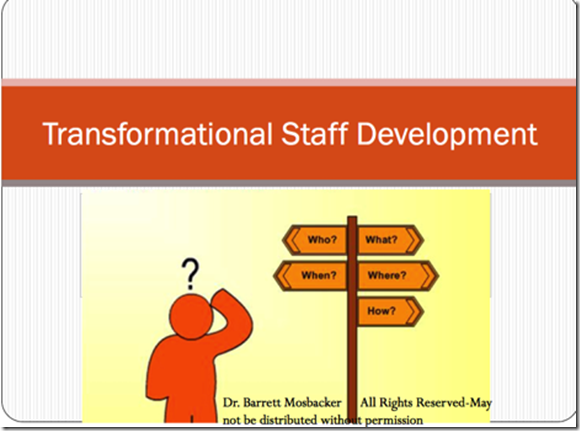
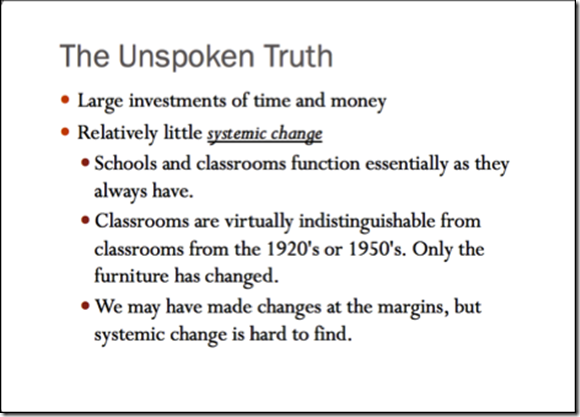
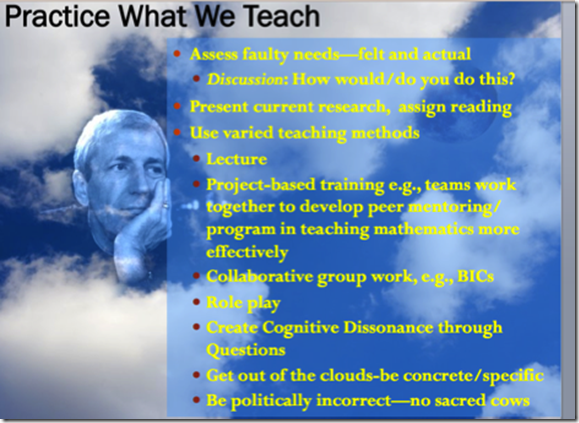

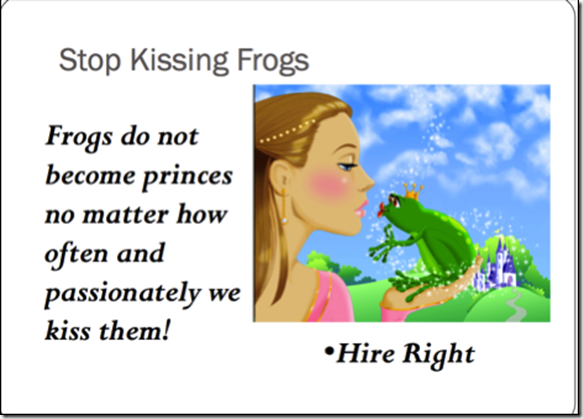




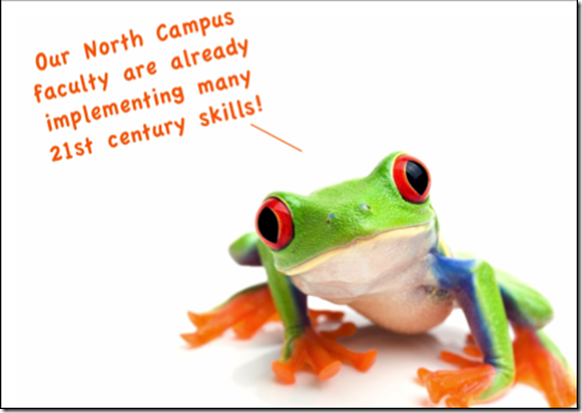




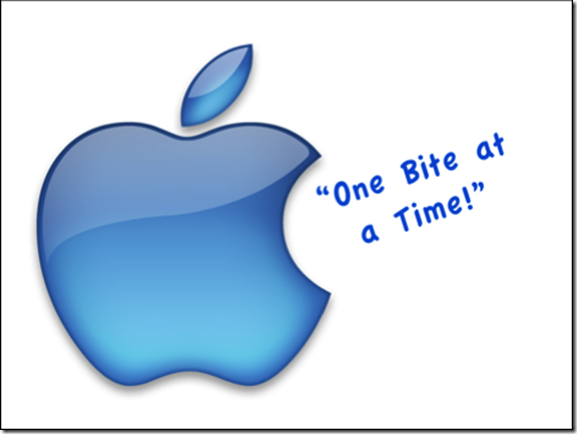
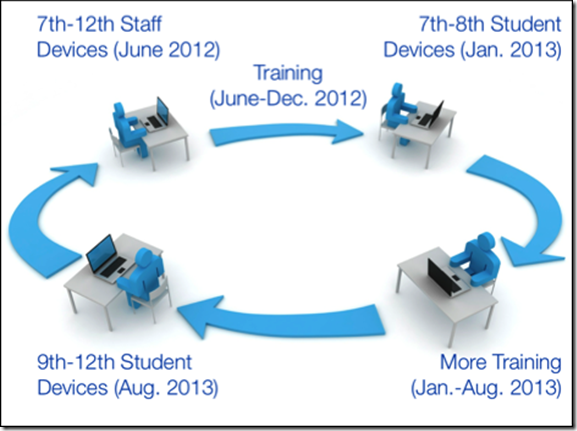
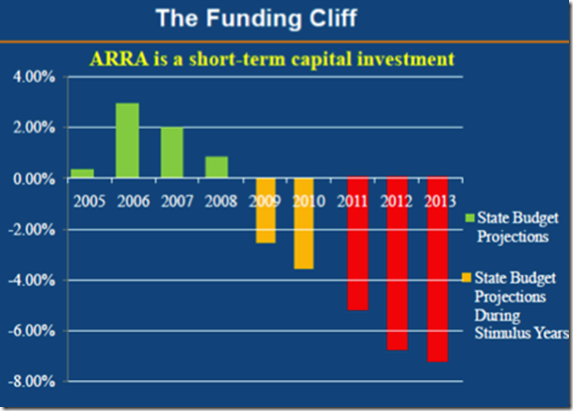
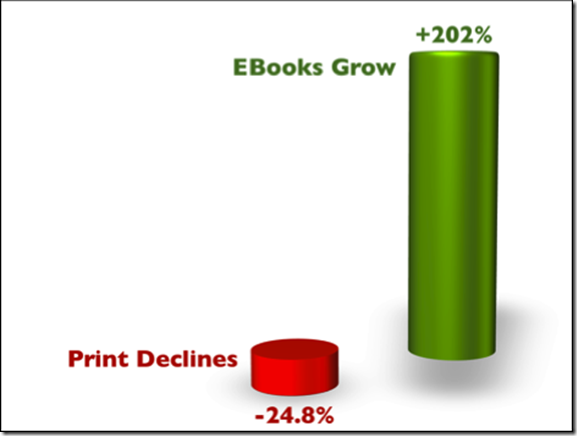





 Remarkable Times, Remarkable Blessings
Remarkable Times, Remarkable Blessings![[EMAIL]](http://s.wsj.net/public/resources/images/TE-AA822A_EMAIL_F_20091008202711.jpg)
 closed their doors. Many who have not closed have lost students and laid off staff. More will close this year. Although a few Christian schools are thriving, most are not.
closed their doors. Many who have not closed have lost students and laid off staff. More will close this year. Although a few Christian schools are thriving, most are not.
 An
An  s are likely to be squeezed from two sides—an anemic economy with high unemployment (and potentially high inflation) and more vigorous competition from charter schools and distance learning options.
s are likely to be squeezed from two sides—an anemic economy with high unemployment (and potentially high inflation) and more vigorous competition from charter schools and distance learning options. I am not going to beat around the bush. We must do whatever it takes, provided it is biblical, to ensure that every classroom is staffed with a highly competent Christian teacher. We must dismiss, ethically and graciously, those who are unable or unwilling to learn and grow and who are merely adequate. We must stop the educational malpractice of having students educated by mediocre teachers using “grace” as a pretext for an unwillingness to make hard decisions. We do not have the right nor the liberty to make our students bear the educational cost of sitting under the instruction of ineffective or mediocre teachers. Period.
I am not going to beat around the bush. We must do whatever it takes, provided it is biblical, to ensure that every classroom is staffed with a highly competent Christian teacher. We must dismiss, ethically and graciously, those who are unable or unwilling to learn and grow and who are merely adequate. We must stop the educational malpractice of having students educated by mediocre teachers using “grace” as a pretext for an unwillingness to make hard decisions. We do not have the right nor the liberty to make our students bear the educational cost of sitting under the instruction of ineffective or mediocre teachers. Period. It sounds like a cliché but we need to be less reactive and more proactive as leaders. We need to look over the horizon in order to position our schools to take advantage of new opportunities and to meet new challenges.
It sounds like a cliché but we need to be less reactive and more proactive as leaders. We need to look over the horizon in order to position our schools to take advantage of new opportunities and to meet new challenges.  We strive to have a “Bias for Yes.” “Yes we Can!” (Sorry, I couldn’t resist!) “Yes we will.” “Yes, we will seriously consider that.”
We strive to have a “Bias for Yes.” “Yes we Can!” (Sorry, I couldn’t resist!) “Yes we will.” “Yes, we will seriously consider that.”